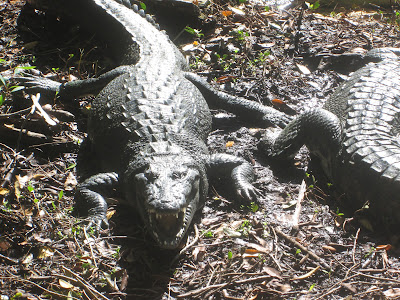On a recent gray, gloomy afternoon, I took the beach road until it ended.
 |
| Not the actual end of the road, but definitely the feeling one gets |
This is one of my favorite Progreso walks, as this end of the beach is often nearly deserted, seeming populated mostly by small boats awaiting their next outing.
Though on this windy afternoon, kite surfing was popular.
I have never been lucky enough to witness turtle season, but a very dead fish in a probably dead shrub indicated how high the tides can get here (and how wild the winds). This unfortunate creature was about four feet up in a bush a good hundred feet from where the Gulf was on this afternoon.
The road actually ends here, at a tidal flat near the Yucalpeten marina, a spot that was hosting a flock of probably fifty tiny shorebirds on this particular afternoon.
Some larger birds, like this handsome sandpiper, allowed themselves to be photographed.
But the real reason for walking to the road's end is this: to sit on a rock with no humans in sight, watch the waves crash, smell the sea, and occasionally get splashed.
Such a spot feels, literally, elemental, allowing the human visitor to be in contact with wild air, ocean, and ancient stone.
And this wild place, with its feeling of meditative isolation, is only a forty-minute stroll from a favorite restaurant with fresh seafood and cold beer. How perfect can life get?






.JPG)























